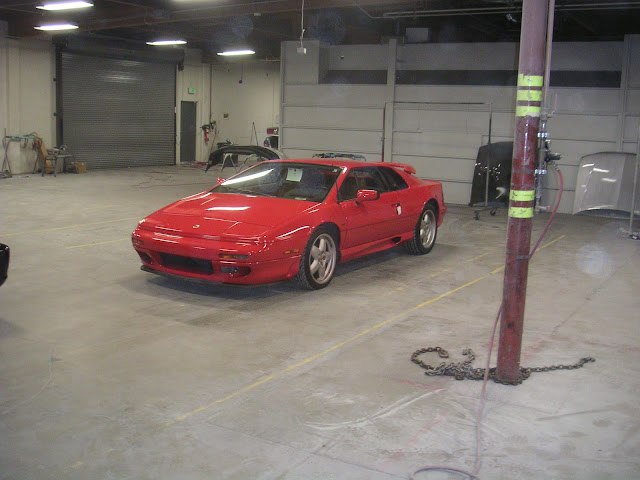What do people mean by single-stage, two-stage & three-stage paint? It's pretty simple. They are different types of auto painting processes. Each "stage" is a step in the process. Think of the stages like the layers of rock in the photo below. Each "stage" is like one of the different color bands in the formation. It is a layer of material:
Single-Stage: It can also be called one-stage or 1-stage. Only one type of paint is used to paint the car. The color is uniform in the paint. So in relation to the rock formation, single-stage paint is equivalent to a single color band of rock.
Single-stage paint is the type used on cars before 1987. After 1987 all manufacturers switched to 2-stage paint. Consider that virtually any house paint, or almost any other type of paint, is a single-stage paint. The single-stage paints available for automotive purposes can be very good stuff. The technology is mature and well understood. Single-stage polyurethanes are available that survive very well against sunlight, acid rain, bird droppings and all of the other environmental hazards that your car gets exposed to every day. Single-stage does NOT mean only one coat of paint. Any reputable shop will apply 2-3 coats of paint to your vehicle. Note that there are also some extremely cheap paints out there--any of single-stage, two-stage or three-stage can be painted with poor materials that produce lousy results and don't last long. Single-stage paints are generally less expensive than 2- or 3-stage paints and can be a great choice for vehicles that you only plan to keep for 1-3 years.

There are some things to consider with single-stage paints. We will be posting additional articles that deal with color matching, gloss, texture and "orange peel," wet sanding or color sanding, solids, metallics, pearls. Feel free to drop by our shop if you are near to us and we will be happy to discuss with you.
One note of caution: color match is more difficult with some golds, silvers and champagne colors in single-stage paints and in general, these colors are not as vibrant as with 2-stage paint. We've seen this issue on vehicles painted with any of the top quality paint manufacturers (DuPont, PPG, Sherwin-Williams). That is a big reason why 2- and 3-stage paints were developed.





